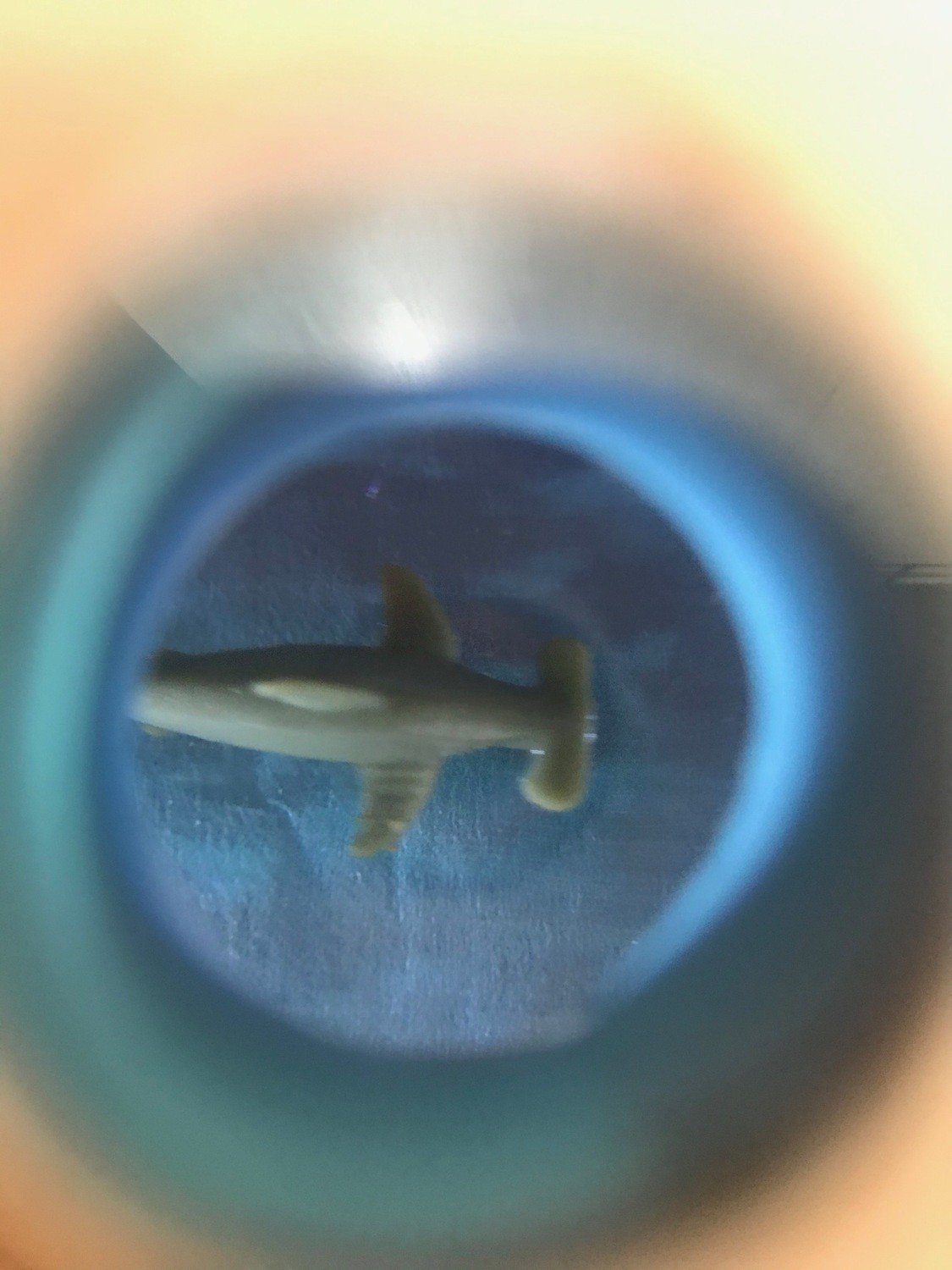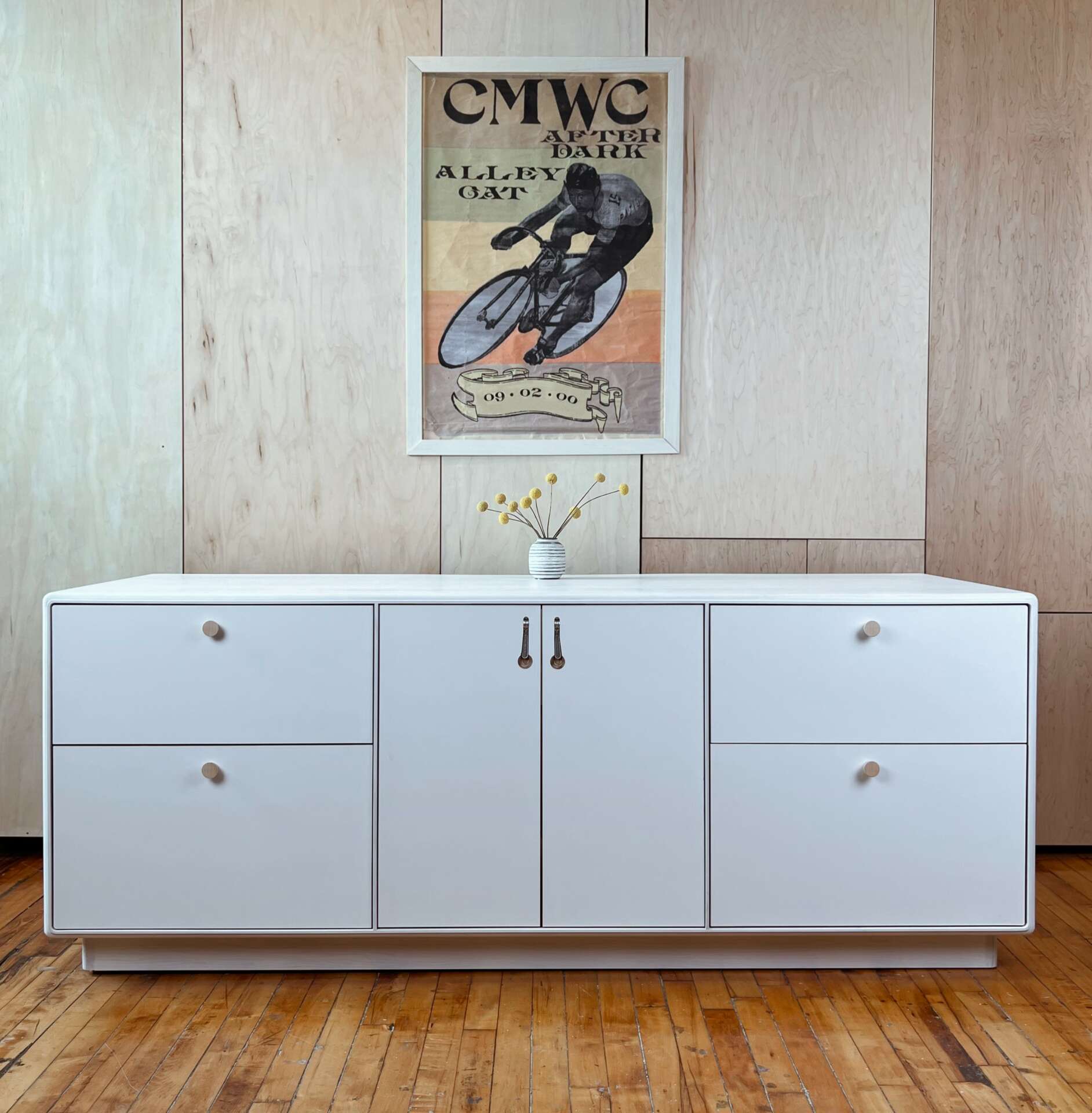We recently connected with Jason Gandy and have shared our conversation below.
Jason, thanks for taking the time to share your stories with us today We’d love to hear about a project that you’ve worked on that’s meant a lot to you.
One of the most meaningful projects that I’ve worked on at my studio, Aardvark Interiors, is the Okulus Desk. This piece marks the genesis of the merging of my art practice with my design process.
For starters, the Okulus Desk is the first piece of furniture within an anticipated collection of “space-within” design products for the home. The desk itself is constructed as a cabinet unit and its distinguishing feature is its peephole, which is designed on the exterior to guide you to a minuscule, internal storytelling portal with a mobile visual surprise— a reality-defying vignette that exists inside the furniture.
The creation of this piece was a landmark moment in my creative practice, since before designing Okulus, my process for creating art versus design was somewhat siloed. With my art, I was most interested in what was going on in the inside of a piece, whereas with designing furniture, I placed more emphasis on its functionality and its external features.
Okulus is a response to this contrast: a piece that equally values interiors and exteriors. By experimenting with my designs and exploring the often neglected and forgotten spaces that are available within furniture— the bottoms of drawers, for example— I’ve come to realize that these hidden spaces offer an opportunity to infuse my design practice with my art.
This method of combining my art and design started with the Okulus Desk and has since then informed other Aardvark designs, becoming a hallmark for site-specific storage installations, other furniture experiments, and experiences in unused, unacknowledged spaces within walls, small rooms, or other infrastructure. This has manifested itself in the form of kinetic scenarios or motorized vignettes with nods to irony or socio-politically charged commentaries.


Jason, before we move on to more of these sorts of questions, can you take some time to bring our readers up to speed on you and what you do?
I grew up on Roosevelt Island, a secluded, experimental community located in the center of New York City.
Living in a small apartment with my family, I would watch my dad construct new spaces in our home, carving out useful areas from every hollow wall. From him, I learned early on the vital importance of space maximization. This influenced me to attend the Tyler School of Art to study sculpture, where I began making installations that explored hidden or unused spaces, such as attics or abandoned houses— spaces that were fertile ground for art making. After my studies, I continued creating objects and furniture, moving to Alaska and then back to New York City, where I eventually started my studio, Aardvark Interiors.
Based in Brooklyn’s Gowanus neighborhood, Aardvark Interiors is a design and fabrication studio. It’s where I am able to explore my passions for art, design, and immersive environments through creating handcrafted hardwood furniture and unique architectural spaces that use traditional materials to express sublime, contemporary-meets-futuristic design – like the Okulus Desk and many other manifestations of hand-made-to-order furniture that are now a part of our design collections.
We also collaborate with architects, interior designers, and private clients to develop new projects, and in that process, apply strategic problem-solving and years of expertise to complement and enhance our clients’ visions for beautiful space, whether residential or commercial in nature.


Let’s talk about resilience next – do you have a story you can share with us?
I was commissioned to make wall of storage cabinets for the documentarian Laura Poitras, who had recently had a solo show at the Whitney museum. One room in her show had small illuminated rectangular portholes in which viewers could see documents leaked to her from Edward Snowden
I had the idea of incorporating a few of these dioramas into the storage cabinets I was designing- providing a mini gallery for people to view her art, while in her editing studio. At the eleventh hour, I decided that I wanted to switch out one of her pieces with one of my own.
I made a diorama that was specifically taylored to her, and her role in exposing the NSA surveillance program through her journalism and her Academy award winning movie ‘Citizen Four’
The piece depicted NSA headquarters, with a couple of agents made from bobblehead dolls, watching a small model of Snowden on a computer screen. Snowden is also looking at a smaller computer screen which depicts a cell with two government agents and someone in a confinement crate.
The actual diorama is a layered scene with a concealed fish eye mirror in a hole in the crate. You can see your own eyes staring back at you, only much smaller and to scale- giving the impression that you are the one being interrogated.
I felt compelled to make this temporary, low tech, multi-layered scene as a surprise for Poitras, but with the intention of replacing it with her artwork once the cabinets were completed
On the contrary, she ended up loving the piece, purchased it, and I subsequently updated it with archival printings, updated lighting, and procuring an actual scan of Snowdens head and printing a scaled 3D model of it to use in the diorama
This is another example of infusing cabinets and furniture with kinetic dioramas, in small spaces that barely existed


For you, what’s the most rewarding aspect of being a creative?
I love taking overlooked, unused, or underutilized spaces, creating surprising internal environments inside of them, and then framing them with some kind of porthole or viewing oculus
‘Peacekeeper Pantry’. is a tall narrow freestanding cabinet with wine storage on the bottom. Inside the upper cabinet there is a shelf with a mobile scene inside. The front edge of the shelf has a tiny pill shaped hole in it, and next to that, a small button.
When the button is pressed, the internal scene is activated- an improbable deep sea world populated by two tiny nuclear armed submarines slowly chasing each other in an endless loop. Their forms are mostly obscured- giving an abstract impression at first that these could be slow moving whales
This mini-diorama exists in a non-existant place- inside of a small, thin shelf. The world it represents however, is of the ultimate magnitude- the future viability of life on earth in the nuclear age


Contact Info:
- Website: aardvarkinteriors.com
- Instagram: @aardvarkinteriors


